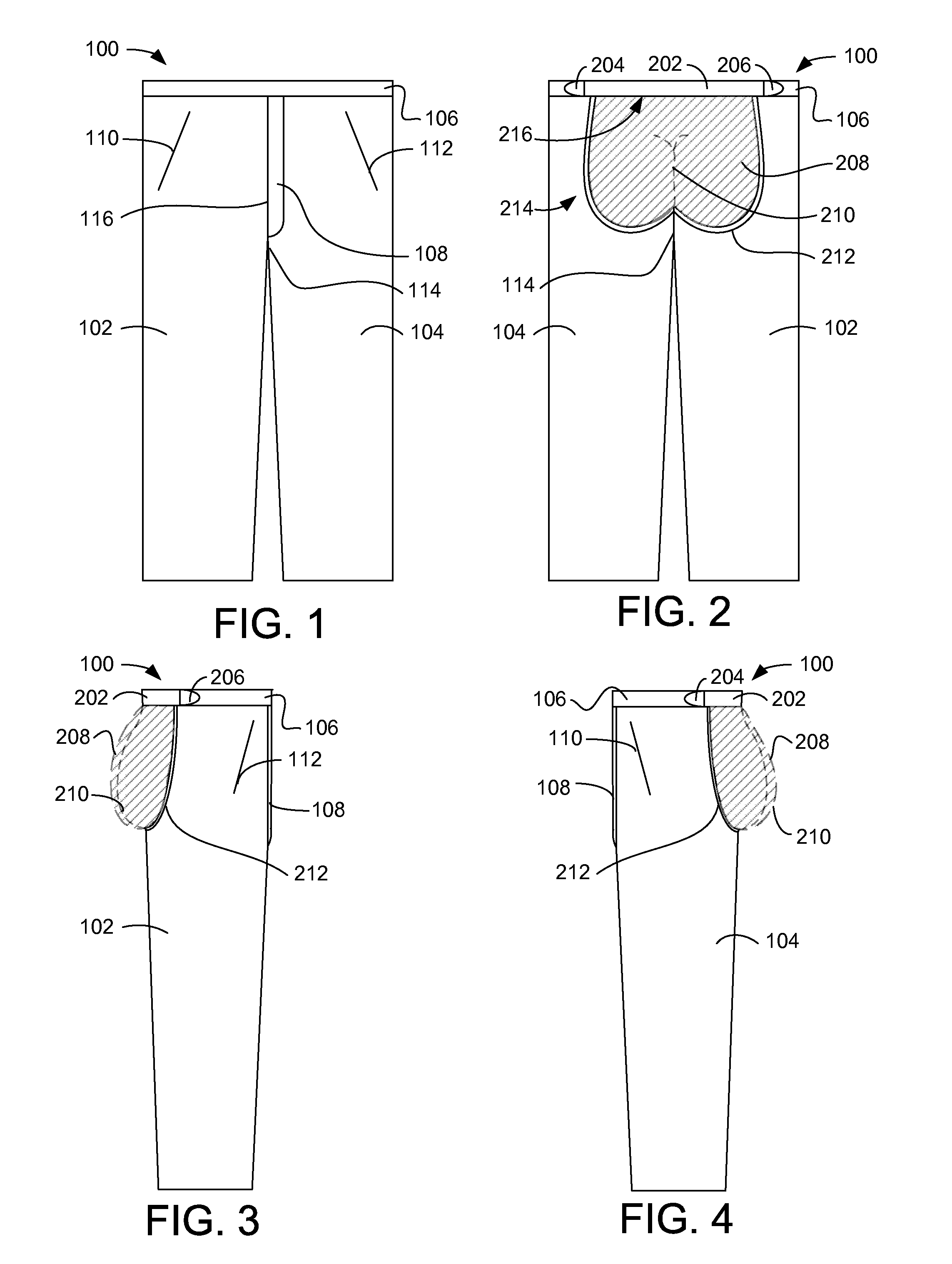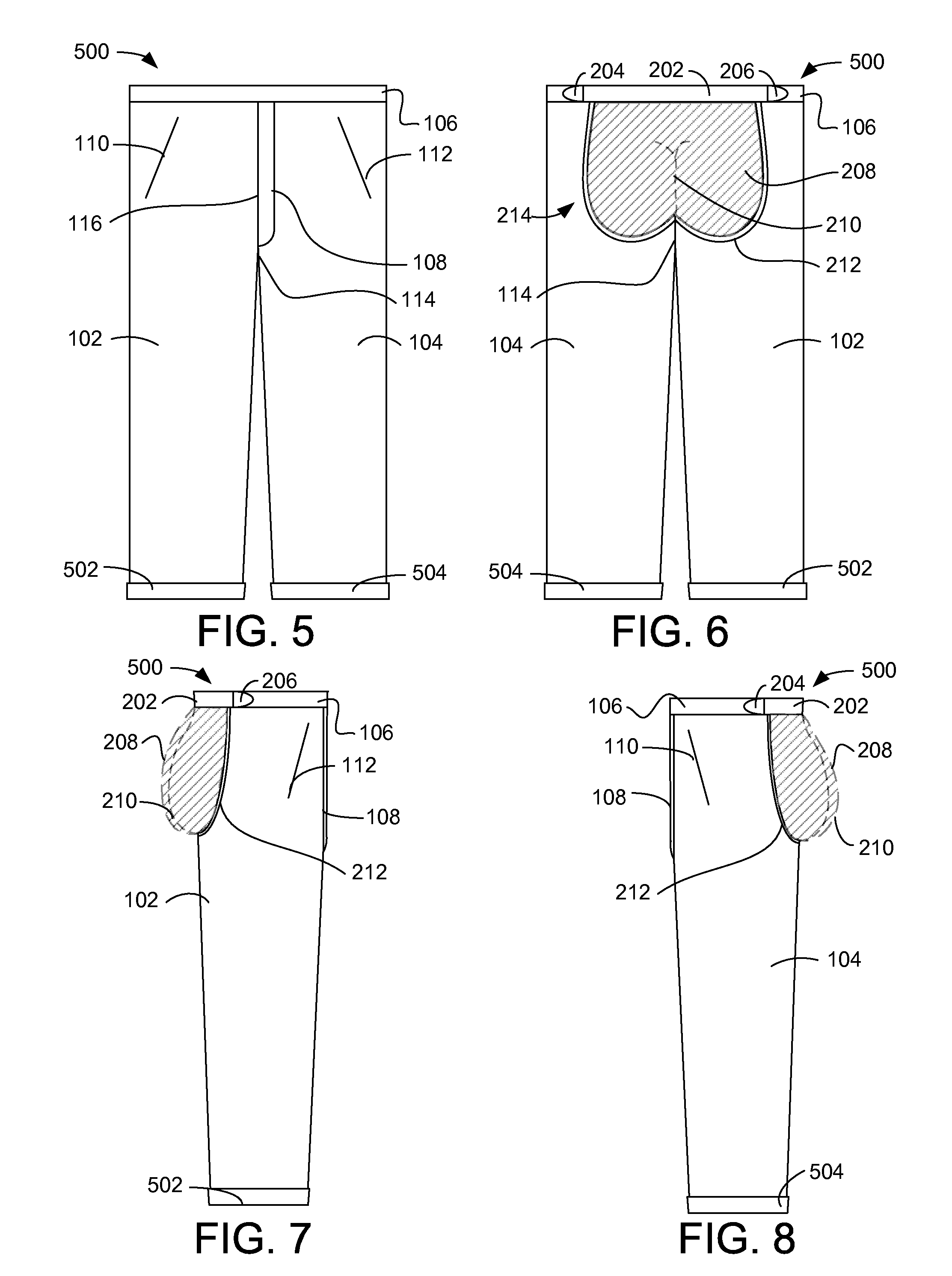Patient clothing system for incontinent invalids
a technology for incontinent patients and clothing systems, applied in clothing, garment special features, protective garments, etc., can solve the problems of nursing home staff engaging significant personal injury risks, presenting hygiene challenges for nursing care personnel, and the amount of physical effort required, so as to protect patient privacy, preserve patient dignity, and undressing is easy.
- Summary
- Abstract
- Description
- Claims
- Application Information
AI Technical Summary
Benefits of technology
Problems solved by technology
Method used
Image
Examples
Embodiment Construction
[0044]FIG. 1 is a front elevation view illustrating an exemplary pair of pants 100 for an incontinent invalid, according to a preferred embodiment of the present invention. Pants 100 have a right leg 102 (from the wearer's perspective) and a left leg 104 joined by a waist band 106, a crotch seam 114, and a fly 108. In an alternate embodiment, waist band 106 may have belt loops (not shown). Fly 108 may be a functioning fly 108 (such as with a zipper, buttons, hook and loop fasteners, or the like) or may be a fake fly 108 that does not open. Fake fly seam 116 joins legs 102 and 104 together and extends to become crotch seam 114. Right pocket 110 and left pocket 112 may be real or fake pockets 110, 112. The pockets 110, 112 may be of any known design, but are preferably large enough to accommodate the hands and reach of bariatric patients. An essential feature of pants 100 is that they appear, from frontal view, to be normal pants 100. Crotch seam 114, which assists in joining legs 102...
PUM
 Login to View More
Login to View More Abstract
Description
Claims
Application Information
 Login to View More
Login to View More - R&D
- Intellectual Property
- Life Sciences
- Materials
- Tech Scout
- Unparalleled Data Quality
- Higher Quality Content
- 60% Fewer Hallucinations
Browse by: Latest US Patents, China's latest patents, Technical Efficacy Thesaurus, Application Domain, Technology Topic, Popular Technical Reports.
© 2025 PatSnap. All rights reserved.Legal|Privacy policy|Modern Slavery Act Transparency Statement|Sitemap|About US| Contact US: help@patsnap.com



